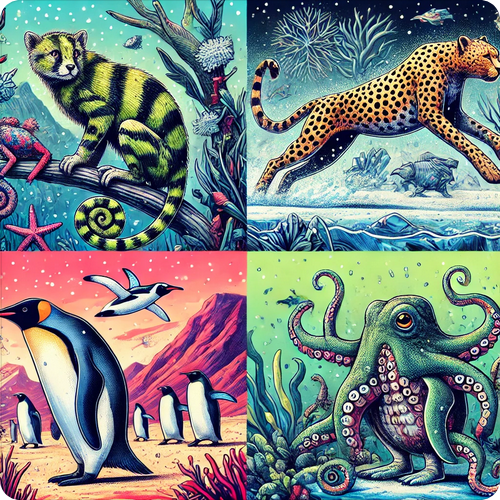Nature is full of wonder, and nowhere is that more evident than in the remarkable adaptations animals have developed to survive. From camouflage to unique hunting techniques, these traits showcase the resilience and ingenuity of wildlife in their struggle for survival.
Chameleons are masters of disguise, changing their skin color to blend into their surroundings. This ability not only helps them avoid predators but also aids in communication during social interactions. Similarly, Arctic foxes have fur that changes color with the seasons—white in winter for camouflage in snow and brown in summer to blend into the tundra.
In the ocean, octopuses demonstrate extraordinary intelligence and adaptability. Using their ability to mimic textures and colors, they can disappear into coral reefs or sandbeds, avoiding predators. Another sea creature, the anglerfish, lures prey with a bioluminescent appendage that acts as bait in the dark depths of the ocean.

Some adaptations are behavioral. Meerkats work together in groups, with designated sentinels keeping watch for predators while others forage. This social cooperation increases their survival chances in the harsh deserts they call home. Meanwhile, penguins huddle together in extreme Antarctic cold, sharing warmth to endure freezing temperatures.
On land, the cheetah’s incredible speed makes it a formidable predator. Its lightweight frame and specialized muscles enable it to reach speeds of up to 70 miles per hour, though only for short bursts. Similarly, bats have adapted to use echolocation, navigating and hunting insects in complete darkness.
These adaptations highlight the creativity of evolution. Each trait, honed over millions of years, gives these animals an edge in their environments. Observing these remarkable abilities reminds us of the intricate balance in nature and the need to protect these species and their ecosystems.